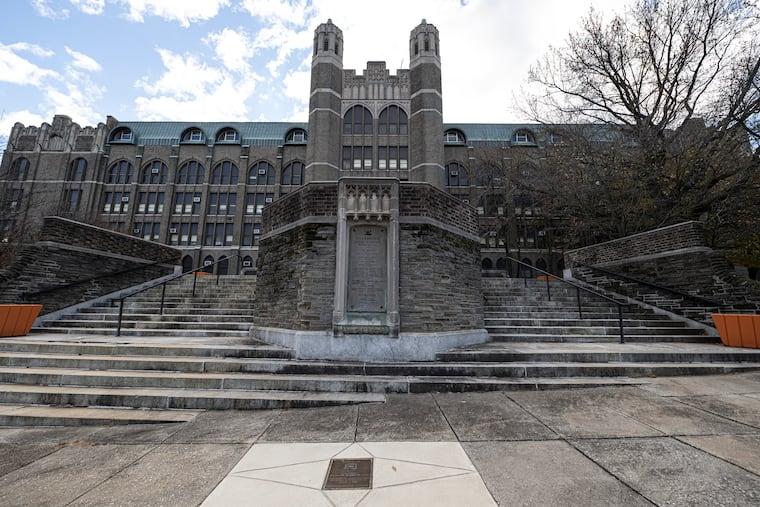Philly is starting on a process that will likely lead to school closures, new buildings. Here’s what you should know.
Some schools are bursting at the seams and others are underenrolled. School closures are possible, but so are co-locations, new construction, and creative uses of school buildings, officials said.

The Philadelphia school board on Thursday will direct Superintendent Tony B. Watlington Sr. to formally begin a facilities planning process to manage the district’s vast stock of aging buildings — an undertaking that will almost certainly result in school closings, as well as new buildings and co-locations.
In the past, the district has taken criticism from city officials and community members for not better managing or understanding its almost $8 billion in facilities needs, including significant environmental issues. And while some schools are bursting at the seams, particularly in the Northeast and parts of South Philadelphia, schools in other parts of the city are underenrolled, with hundreds or thousands of unused seats.
The school system has space for 180,000 students but currently serves 116,000 in its own schools. Its “Renaissance schools,” which are neighborhood charters that operate on a contract basis in district-run buildings, have room for 19,801 but have 14,387 enrolled.
“The board is done kicking the can down the road,” president Reginald Streater said Tuesday.
Streater said he anticipated finishing the public process within Cherelle L. Parker’s current term as mayor.
Why now? Watlington, who came to Philadelphia in 2022, wanted academic and organizational strategies in place first before charting a facilities course.
And Parker, who campaigned for her job on a promise to have the city help address the facilities situation, is also on board, Streater said, adding that he believes it would have been “governmental malpractice for the last board to engage in this without having serious close conversations with our newly elected mayor.”
Details about the process are scant so far, because “there is no secret plan,” Streater said. The process is meant to develop with input from experts, city officials, and communities — he said it won’t be foisted upon them.
Closings are no one’s first choice, but “I’m not going to gaslight the community” and promise no closings, Streater said. But the process will also imagine situations where buildings are repurposed and where one school moves into another’s building, board officials said.
Board documents call for the district to maximize school building use, and provide more equitable prekindergarten programs, access to art and music, and career and technical education opportunities. It also directs the administration to “address enrollment trends that have created financial and operational inefficiencies, identify district schools/buildings to be modernized, co-located, repurposed or closed.”
Three resolutions, and a long history
The board on Thursday will consider three separate resolutions — one that formally begins the process, and action items paying for “facilities planning services” and “community engagement and facilitation support.” The contract amount of each will be made public before the meeting, the board president said.
Streater promised a new process to a city soured by prior attempts to understand the facilities crisis. In 2012, the Boston Consulting Group recommended the district close up to 57 schools over five years to “rightsize” the district and avert a financial crisis. Soon after, the former School Reform Commission closed about 30 schools.
In 2019, Superintendent William R. Hite Jr.’s administration began to examine its facilities needs with an eye toward making recommendations about co-locations, new school needs, and closures, but that $1.4 million project was ultimately shelved amid the pandemic and concerns about the process’ efficacy.
‘No appetite for that’
Politicians and the board are well aware that school closings are a politically thorny issue, with few upsides.
Streater said whatever happens, this won’t be a repeat of the district’s 2013 mass school closures, which were sparked by a fiscal crisis so severe the school system had to borrow money just to make ends meet.
The district has time to “be strategic, and think about this in a way that seeks to reverse one of the unintended consequences of last time” — when students sometimes left schools for others that were lower-performing, and schools that took on new groups of students from closed schools often struggled, too.
Streater himself is a graduate of Germantown High, which closed in 2013, then sat empty for more than a decade before being sold to a developer who is turning the space into a mixed-use development with condominiums, office, and commercial space.
The board “has no appetite for that,” Streater said, but it wants to consider creative solutions for using “resources in a way that you can’t when you have schools that have 200 students in them, or 100 students in them.”
Streater also signaled the district will consider its 17 Renaissance charter schools as part of the planning process. Audenried, built in 2008 and given to Universal to run as a neighborhood charter in 2011, has room for 1,100 students but educates fewer than 600.
What’s next?
After the board adopts the action items, presumably at its meeting scheduled to begin at 4 p.m., a competitive bidding process will begin for a projects team and communications and public engagement support.
Then, Streater said, the district will delve into the work of building a plan from the ground up, with community feedback.
“That,” he said, “will drive the rest of the process.”